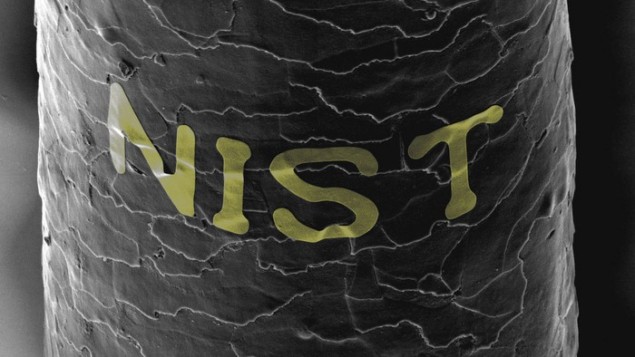
Refined sugar may be bad for our teeth and waistlines, but a researcher at NIST in the US has used the calorific foodstuff to create a biologically friendly process that could be used for making curved microelectronics. Using a technique that he discovered by accident, Gary Zabow encapsulated flat patterns of tiny particles within solid sugar and then transferred the patterns to curved surfaces.
Today’s microelectronics are made by integrating large numbers of devices within flat chips – a technique that has been perfected over many years and involves complex printing processes. However, there is a growing desire to create microelectronics with curved or flexible shapes that would be suitable for medical or biological applications. Printing patterns directly on curved surfaces is a tricky business, so researchers have developed ways of transferring patterns from flat to curved surfaces. However, these methods often involve the use of chemicals that are not appropriate for making biomedical devices. Other techniques involve floating patterns on water, but these come with different challenges.
Candied magnets
Working in Boulder, Colorado, Zabow came up with the idea of using sugar when he had to send tiny magnetic particles to colleagues in a biomedical lab. He encapsulated an array of the particles in solid sugar. He then melted one of the chunks at the bottom of a beaker and then dissolved the sugar away using water. He had expected the particles to leave the beaker with the sugar solution, but much to his delight, the pattern remained, stuck to the bottom of the beaker.

Intricate sugar printing helps build blood vessels
This led to the development of a new transfer technique that begins with dissolving sugar in water and corn syrup – the latter being important because it prevents the solid sugar from crystallizing, which is detrimental to the transfer process. The solution is poured over a pattern of tiny particles on a flat substrate and allowed to harden. The solid sugar and the pattern are then lifted and placed onto the target substrate. The sugar is heated gently, causing it to flow into the contours of the target substrate. Then the sugar is dissolved with water, leaving the pattern behind.
Zabow tested the process on number of different target substrates including metal, plastic, semiconductor and several different biological surfaces. He even managed to transfer a pattern onto the sharp point of a pin. To honour the lab where the work was done, he also transferred “NIST” in gold lettering onto a strand of human hair (see figure).
The research is described in Science.
